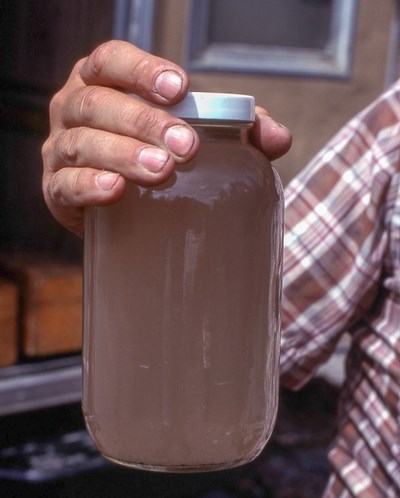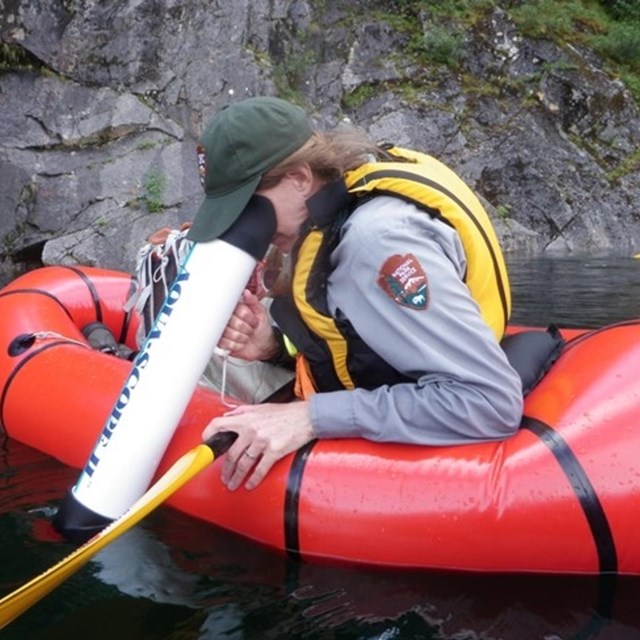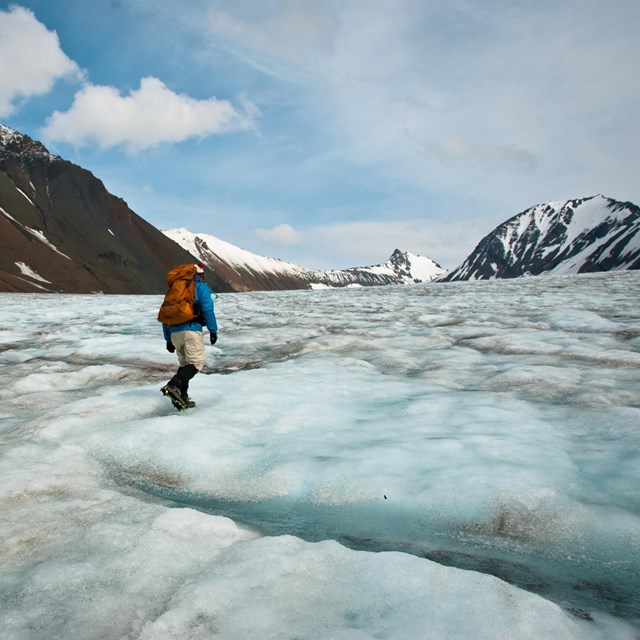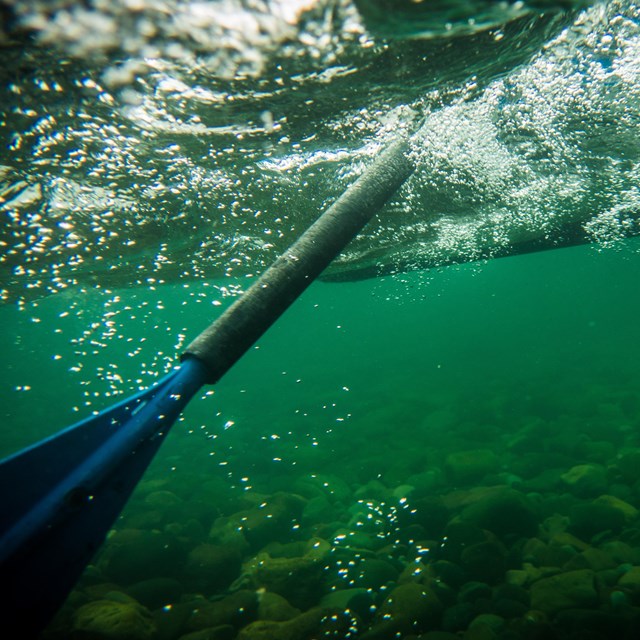
NPS Photo
What Happens Upstream Matters!
Water alone is not enough; quality matters too. Quality is not only important for human uses such as drinking water and swimming, but also for the flora and fauna that call those waters home. They, too, need clean water to survive.
Water Quality Effects
Although transparent, water isn’t always clean! As water moves throughout an ecosystem, it can become exposed to different substances that can alter the quality of water. When water quality is degraded, it can cause things like:
-
Closures due to harmful algal blooms
-
Fish consumption advisories
-
Swimming restrictions due to pathogens
-
Expensive treatment to meet drinking standards
Impairments
Some substances in the water column occur naturally. Water sources can pick up nutrients from decaying matter, or carry certain minerals from rock that waters interact with. But some substances occur unnaturally, or can be exacerbated by human influence. For example, too much nutrients in the water column from fertilizer use can cause algal blooms. Pharmaceuticals can enter our waterways from the flushing or improper disposal of medication.

NPS Photo
Possible impairments in water are:
- Excess nutrients, from use of fertilizer
-
Heavy metals, like mercury
-
Pathogens
-
Sediment
-
Rising water temperatures, due to changing climate
-
Newly emerging contaminants, like Micro-plastics
Monitoring Change
The National Park Service supports the Clean Water Act and the Safe Drinking Water Act by monitoring and researching impairments and potential impacts to park waters, and routinely tests park water supplies for potability. Water quality is measured as a vital sign for park units, which helps to indicate the overall health or condition of a resource; in this case, "Is the water healthy?" Discover the ways we monitor water quality below.
-
 Hydrographic Impairment Statistics
Hydrographic Impairment StatisticsLearn the common impairments found in NPS waterways.
-
 Vital Signs Monitoring
Vital Signs MonitoringLearn how the NPS monitors water.
-
 Beneath the Surface
Beneath the SurfaceLearn more about the water quality of NPS Wild and Scenic Rivers.
From the field
- Cuyahoga Valley National Park
Creating Cuyahoga Valley National Park: 50 Moments That Tell the Story
- Locations: Cuyahoga Valley National Park

In honor of our 50th anniversary year in 2025, Cuyahoga Valley National Park is highlighting 50 key events that help define who and what we are. They showcase the many partners that have come together to preserve open space, create opportunities for recreation, clean up pollution, restore habitats, and save historic resources.
- Natural Resource Stewardship and Science Directorate
Teaming Up for Science
- Offices: Natural Resource Stewardship and Science Directorate

A new partnership began in October 2021 and supports science and stewardship activities that benefit both parks and their local communities. Over the next five years parks and their communities will collaborate to identify and address their scientific priorities. Projects in the first year will focus on water quality, marine biodiversity, and preservation of night skies.
- Acadia National Park
A New Way to Gauge Risk of Toxic Blooms in a National Park
- Locations: Cuyahoga Valley National Park
- Offices: Heartland Inventory & Monitoring Network, Inventory and Monitoring Division

At Cuyahoga Valley National Park, an inventory of streams and their inhabitants is helping park managers understand and protect these vital waterways. The study revealed that most streams in the park are in good condition with minimal habitat damage. For the few streams facing challenges, conservation and restoration initiatives will help restore them to high ecological quality.
- Locations: Cumberland Gap National Historical Park
- Offices: Cumberland Piedmont Inventory & Monitoring Network, Inventory and Monitoring Division, Natural Resources Stewardship & Science
In 2008, scientists from the Cumberland Piedmont Network found a concerning trend: E. coli levels were too high. The source needed to be identified and addressed for the health and safety of the thousands of humans and animals that enjoyed the park. The network's long-term water quality monitoring program not only helped to identify the issue, but it also provided the tools to evaluate the solution.
- Locations: Arches National Park, Bryce Canyon National Park, Canyonlands National Park, Capitol Reef National Park, Dinosaur National Monument, more »
- Offices: Inventory and Monitoring Division, Northern Colorado Plateau Inventory & Monitoring Network

Good, clean water is essential for healthy ecosystems--for people, vegetation, and animals--making it one of the most important resources in the semi-arid west. The Northern Colorado Plateau Network and its partners monitor water quality in 8 national parks in Utah and Colorado to help scientists and managers conserve these resources. This article summarizes 2019-2022 water quality data and how they compare to state standards.
- Bighorn Canyon National Recreation Area
Series: Water Resources Monitoring in the Bighorn River near Fort Smith, Montana, 2019
- Type: Series
- Locations: Bighorn Canyon National Recreation Area

The Greater Yellowstone Network monitors water quality and analyzes river discharge in the Bighorn River near Fort Smith, MT, each year. This sampling location in Bighorn Canyon National Recreation Area is just downstream of the Yellowtail Afterbay Dam. Water quality is relatively good at this location. We will update this site each year as new information is collected.
- Bighorn Canyon National Recreation Area
Series: Water Resources Monitoring in the Bighorn River at Kane, Wyoming, 2019
- Type: Series
- Locations: Bighorn Canyon National Recreation Area

The Greater Yellowstone Network monitors water quality and analyzes river discharge in the Bighorn River at Kane, Wyoming, each year. The Bighorn River watershed contains 16 impaired stream segments downstream of Boysen Reservoir and upstream of Bighorn Lake. We present results of our monitoring and links to data from previous years in this series. We will update this site as new information is collected.
Last updated: August 13, 2024




